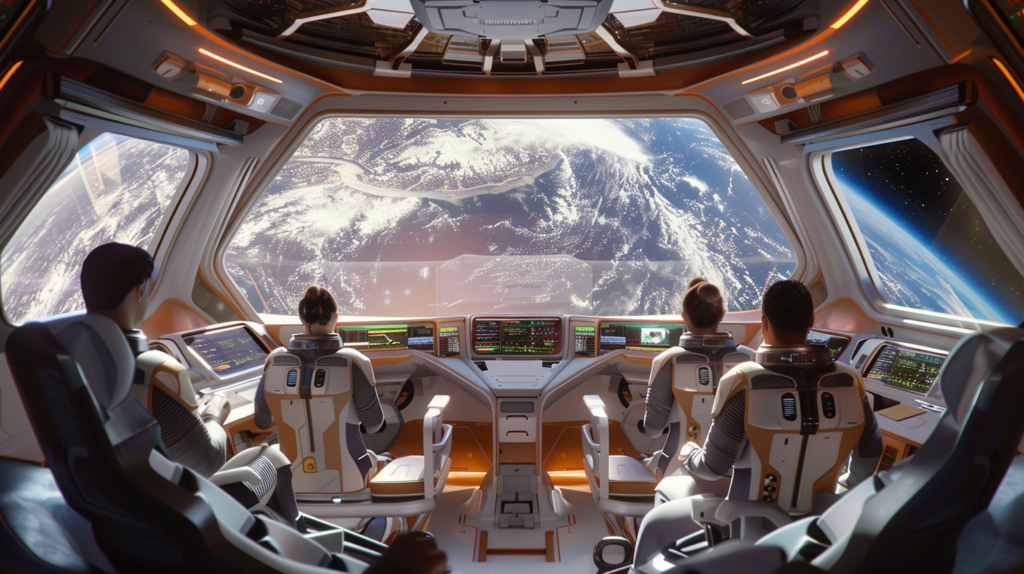
As humanity inches closer to transforming the stuff of science fiction into our living, breathing future, the conversation around space colonization gains momentum. Yet, amidst discussions on rocket engines, life support systems, and terraforming technologies, a critical component often finds itself overlooked: Space Colony UX Design. Yes, you heard it right. As we prepare to embark on journeys to Mars and beyond, the role of UX in ensuring that life beyond Earth doesn’t just survive but thrives, becomes paramount.
Consider this: What good are cutting-edge habitats and state-of-the-art equipment if the humans using them struggle with interfaces reminiscent of an Escher painting? The reality is, as we venture into the unknown, the need for intuitive, user-centered Space Habitat User Experience design becomes more critical than ever.
Imagine the first settlers on Mars, battling a dust storm while grappling with an overly complicated airlock system. This scenario highlights the necessity for Space Colony UX Design to step into the spotlight. The task isn’t merely about aesthetics or ensuring that the interface has a pleasant shade of red; it’s about creating environments and systems that are efficient, safe, and conducive to space colonists’ well-being.
This introduces the concept of ‘Designing for Extreme User Conditions’ within Space Habitat User Experience. Space is unforgiving, with slim margins for error. Every design decision must consider the harsh realities of space environments, from radiation exposure and microgravity to confined spaces and the psychological toll of isolation. UX designers must innovate to make these extreme conditions as normal as possible. Adaptable interfaces that respond to the cognitive and physical strains of space travel or habitats that mimic Earth’s circadian rhythms to regulate sleep cycles and mood are prime examples of Space Colony UX Design at work.
Moreover, the social aspect of Space Habitat User Experience in space colonization is vital. As communities form on other planets, the design of communal and private spaces will significantly impact mental well-being and a sense of belonging. The challenge lies in creating environments that not only satisfy survival needs but also nurture the human spirit.
Accessibility forms another critical pillar of Space Colony UX Design. Space habitats and tools must cater to a broad range of users, including those with physical disabilities, underlining that space colonization aims to expand what’s possible for humanity as a whole.
Sustainability in Space Habitat User Experience also demands attention. In the closed ecosystems of space habitats, where every resource is precious, UX designers must collaborate with engineers and ecologists to devise systems that are user-friendly while minimizing waste and promoting recycling.
Learning from mistakes is integral to Space Colony UX Design. The iterative process of UX, with its focus on testing and feedback, offers a framework for continuous improvement, crucial for space colonization. By prototyping and testing environments and interfaces under simulated conditions, designers can identify and rectify issues before they escalate.
Interaction design presents another fascinating challenge. With advancements in AI and robotics, creating interfaces that enable smooth human-machine collaboration becomes crucial for the success of a space colony.
Virtual and augmented reality also play a pivotal role in Space Colony UX Design, serving as tools for training and entertainment. They offer unique opportunities for UX designers to create immersive experiences that prepare colonists for their new lives while providing escapism from space habitat confines.
In conclusion, as we stand on the brink of this new frontier, it’s evident that Space Colony UX Design and Space Habitat User Experience are not just about making life beyond Earth viable; they’re about making it enjoyable. The journey to establishing human life beyond Earth is filled with challenges, yet the significance of UX design in enhancing life quality in space colonies is undeniable. As we embark on this bold venture, let’s not just create habitats, but homes that enrich life among the stars, ensuring a stellar experience for space colonists.


